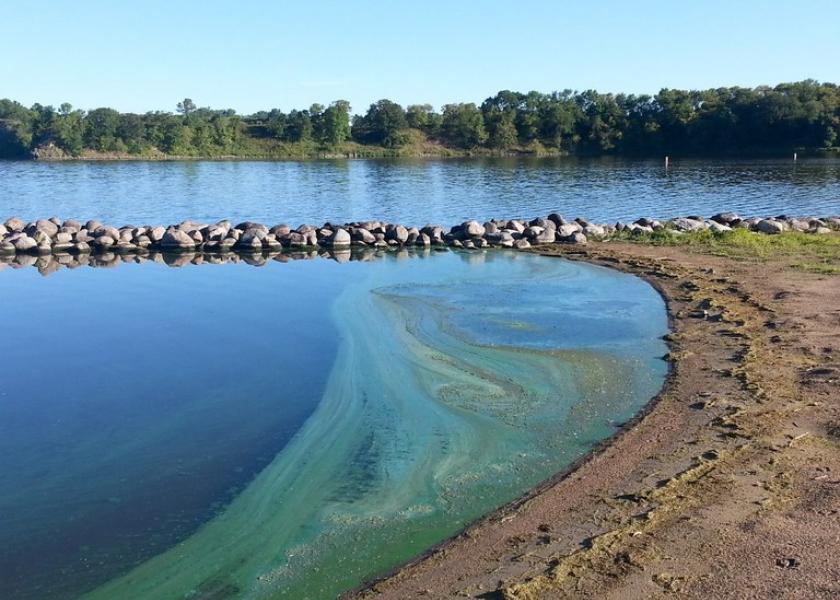Prevent Cyanobacteria Blooms

North Dakota State University Extension livestock specialists warn producers to take steps to prevent cyanobacteria, also known as blue-green algae, which can produce toxins that are harmful to livestock, wildlife and people.
“This summer, cyanobacteria blooms have been in the headlines frequently,” says Miranda Meehan, Extension livestock environmental stewardship specialist. “Several of the blooms have produced high toxin levels, requiring the issuance of a water advisory for recreationists and resulting in the death of several livestock.”
This has led to inquiries on treating cyanobacteria.
“However, many of the treatments available for cyanobacteria only treat the current bloom,” Meehan says. “These treatments kill the bacteria. However, toxins are released when the bacteria die, increasing the risk for poisoning. Additionally, these products can be deadly to beneficial aquatic organisms and wildlife. For long-term prevention, you need to understand the causes of a bloom.”

Cyanobacteria blooms are caused by excess levels of nutrients, specifically nitrogen and phosphorus. The most common sources of excess nutrients in North Dakota are runoff or soil erosion from fertilizer and manure. Learn more from the NDSU Extension “Environmental Implication of Excess Fertilizer and Manure on Water Quality” publication (https://tinyurl.com/EnvironmentalImplications).
The following practices can reduce nutrient levels, lowering the risk of cyanobacteria blooms in the future and enhancing water quality:
- Apply and manage fertilizer and manure properly.
- Reduce the amount of soil lost through runoff from agricultural fields through crop selection and soil conservation practices, such as reduced tillage and cover crops.
- Incorporate surface-applied phosphorus sources below the soil surface in a manner that does not increase soil erosion.
- Implement a nutrient management plan or grazing management system that reduces the levels of nutrients entering the water source.
- Establish or maintain buffer strips of perennial species to reduce nutrients from entering the water.
- Hay or graze buffer strips in the fall to reduce the vegetation that might release nutrients into surface water in the spring when it decomposes.
- Prevent livestock from loitering in surface water by installing alternate water sources and/or fencing to reduce access.
“Several state and federal programs provide assistance to landowners interested in implementing conservation and management practices to improve nutrient management and water quality,” says James Collins of the North Dakota Department of Environmental Quality. “Contact your local Soil Conservation District, Natural Resources Conservation Service or Farm Service Agency to learn more about these programs.”
If managed properly, fertilizers and animal manures benefit crop production without causing environmental problems. Learn more about managing nitrogen and phosphorus in NDSU Extension publications “Nitrogen Behavior in the Environment” (https://tinyurl.com/NitrogenBehavior) and “Phosphorus Behavior in the Environment” (https://tinyurl.com/PhosphorusBehavior).
For more information about cyanobacteria (harmful algae blooms), refer to the NDSU Extension publication “Cyanobacteria Poisoning (Blue-green Algae)” at http://tinyurl.com/NDSU-blue-green-algae, visit www.tinyurl.com/WMP-HABS







